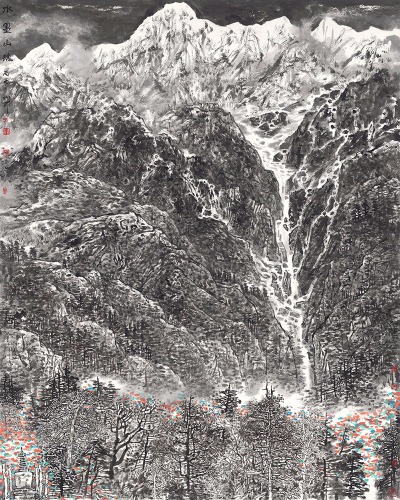 |
|
Li's ongoing exhibition in Beijing features works depicting the natural scenery and people he encountered during his many journeys to Tibet, Qinghai, Gansu and Yunnan.[Photo provided to China Daily] |
During his first journey to the Tibetan-inhabited areas, Li Xiaoke accompanied a photographer named Zheng Yunfeng to the mouth of the Yellow River in the Bayan Har Mountains in Qinghai. They carried a calligraphy scroll in praise of the river's grandeur that was written by Li Keran, and had the characters inscribed on a stele and placed it on the river bank.
Their travels in Qinghai in 1988 lasted some 45 days, during which Li Xiaoke was overpowered by what he calls the "purity of Tibetan lands and the innocence of the people".
This led to further trips to the source of the Yangtze in the Danggula Mountains in Gansu province's southern areas, and other regions inhabited by Tibetans.
"His initial trips to the area were somewhat against the will of his father who worried about his safety," says Liu Ying, wife of Li Xiaoke and secretary-general of the Li Keran Art Foundation.
"But he found a brand new world there, where he was motivated to become an artist outside his father's influence."